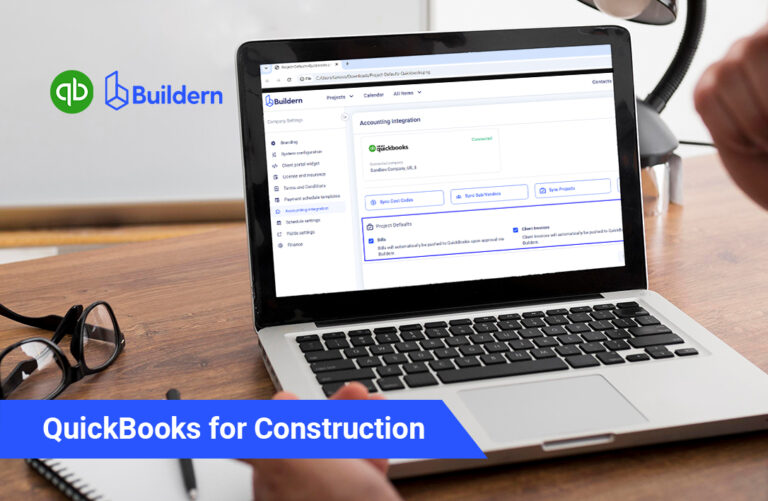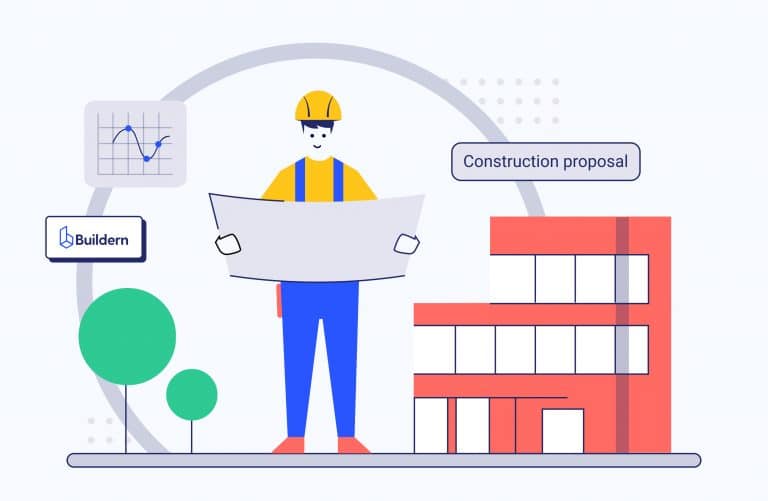Construction Risk Management: 8 Effective Tips To Success
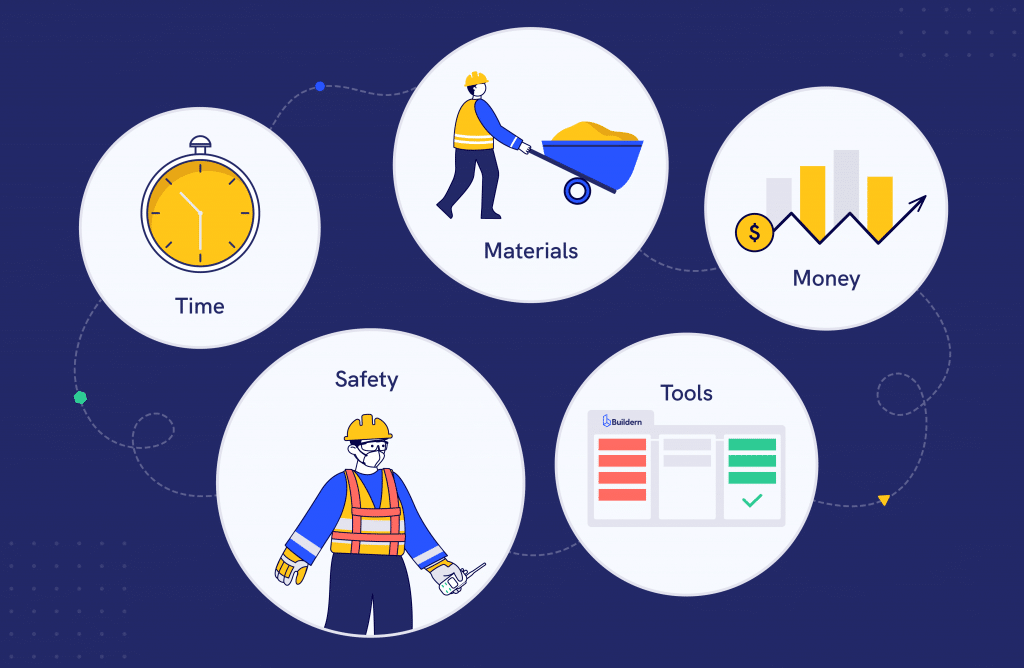
In construction, orchestrating a successful project involves navigating through a labyrinth of intricacies. The grandeur of these undertakings is matched only by the complexity they entail. From crafting schedules and allocating budgets to nurturing a proficient workforce through comprehensive construction risk management training and drafting a symphony of contracts—the journey of a construction project is a tapestry woven with multifaceted administrative intricacies.
Even the tiniest oversight during these stages can cascade into major project hurdles. And even when everything seems to be on track, unexpected issues can still emerge, throwing a wrench in your plans.
That’s why all construction companies need to have a well-thought construction risk management plan that will help avoid the probability of rework and ensure the successful completion of the project.
We’ve distilled eight essential tips for effective construction risk management to empower you with control in any situation. By following these guidelines, you’ll navigate the complexities of construction with confidence, ensuring your projects stay on course towards accomplishment.
Plan Everything with Your Subcontractors Beforehand
Planning is the key to successful construction risk management. If you don’t want to encounter problems later on, we suggest planning everything with your subcontractors before starting the project.
Here are the two key aspects to consider:
Labor Shortage Management

One of the most common problems you might face during the initial stage of your projects is the labor shortage and construction team management. According to the report conducted by the Home Builder Institute on the construction labor market, over the next three years, the industry will need more than 2 million workers to satisfy the demands for new houses and buildings.
That’s why we suggest making a strategy of how your company can attract the best local talent before you even start the hiring process. You should offer something that your competitors don’t. Otherwise, experienced construction employees will not have any reason to leave their current position and join your team.
One of the ways to stand out in the competition is by offering high wages and benefits. Good benefit packages will help you hire professionals and be one of the main motivations for them to stay longer.
If you notice that the hiring process takes too much time and you don’t have enough resources to find the best experts in the industry, consider outsourcing. This will help you recruit new staff efficiently without wasting much of your time.
Contract Pre-Planning
Once you attract your construction employees, don’t rush to create a quick contract. Instead, when designing your contract, take your time, understand what you expect from your employee throughout the project, and clearly state it all in the subcontractor’s agreement statement. Here are a couple of things to include in the document:
- Scope of their work
- Compensation for the harm or loss
- Dispute resolution procedures
- Terms of the payment
- Termination terms
These are only a few of the sections you should have in your contract. Remember that if you expect anything particular from your employees, you should include it in your contract.
The next step will be estimating the scope and costs of the planned work. During pre-planning, the task list is extensive: conceptualizing the project, estimating budgets, coordinating resources, and mapping out timelines. This phase lays the foundation for success, and any misstep here can reverberate throughout the project’s lifecycle.
This is where a professional construction project management software like Buildern steps in as an invaluable ally. With its user-friendly interface and robust capabilities, Buildern is designed to streamline the pre-planning processes with unparalleled efficiency. It acts as a digital command center, enabling seamless collaboration among stakeholders, accurate cost estimations, resource allocation, and precise timeline projections.

Buildern offers a holistic approach, simplifying complex tasks. It becomes a project’s compass, guiding teams through the labyrinth of details, ensuring nothing falls through the cracks. Its data-driven insights provide a panoramic view of the project’s progress, allowing for informed decision-making at every juncture.
What truly sets Buildern apart is its adaptability. It caters to projects of all scales and types. This versatility translates into enhanced agility, enabling teams to respond promptly to evolving circumstances. In an industry where precision matters, Buildern emerges as the reliable solution that transforms chaos into cohesion. Its intuitive interface and comprehensive features ensure that pre-planning becomes a strategic advantage rather than a hurdle for construction risk management.

2. Digitalize the Management Processes
In the age of technologies and digital solutions, paperwork is no longer relevant. You’ll simply get lost in all the files of reports and documents, eventually failing to meet the deadlines and going over the budget. To avoid that, get an all-in-one construction software that will help you access all the data from one place and manage it all professionally.
There are multiple ways you can benefit from good management software. First of all, it will allow you to access real-time data from the construction field (through photos and video) to see exactly at which stage the work is at the moment. The software also allows you to take care of the financial aspects of your project, including accounting and budgeting.
With software like Buildern, you can also negotiate with your potential clients, manage the bidding process, create and submit proposals, define user roles, create and sync schedules, etc.
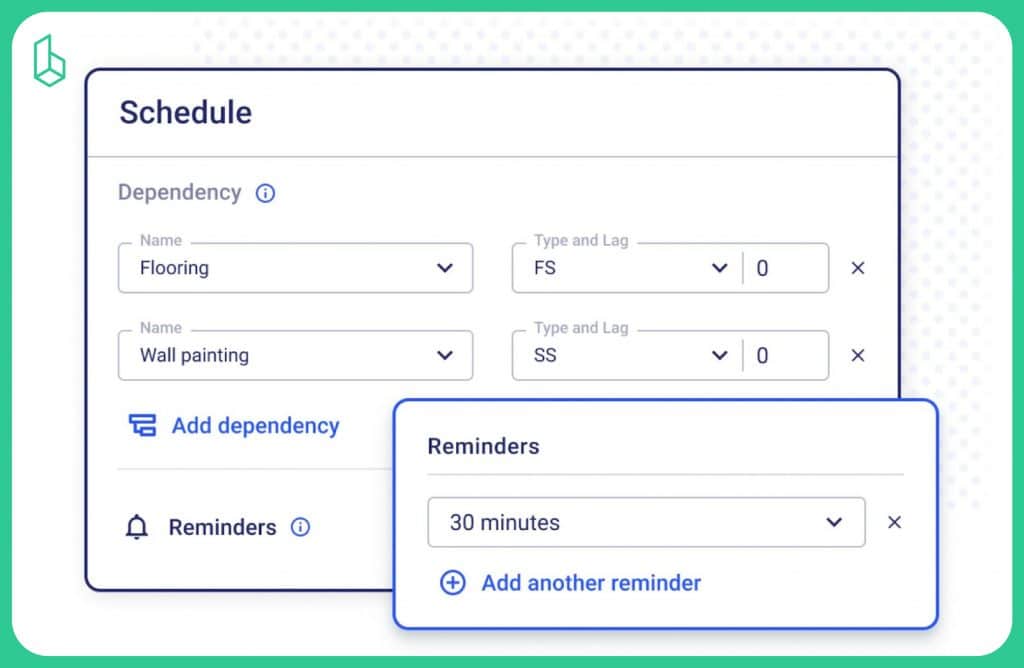
Buildern empowers you to control every intricate facet of your project’s timeline through its innovative features, including project Gantt charts and interdependencies.
The Gantt chart in Buildern is the visual heartbeat of your project. It presents a comprehensive overview of tasks, durations, and milestones in a timeline format, offering a bird’s-eye view of the project’s progress. Whether breaking down complex projects into manageable phases or tracking the interplay of tasks, the Gantt chart provides clarity that translates to efficiency.
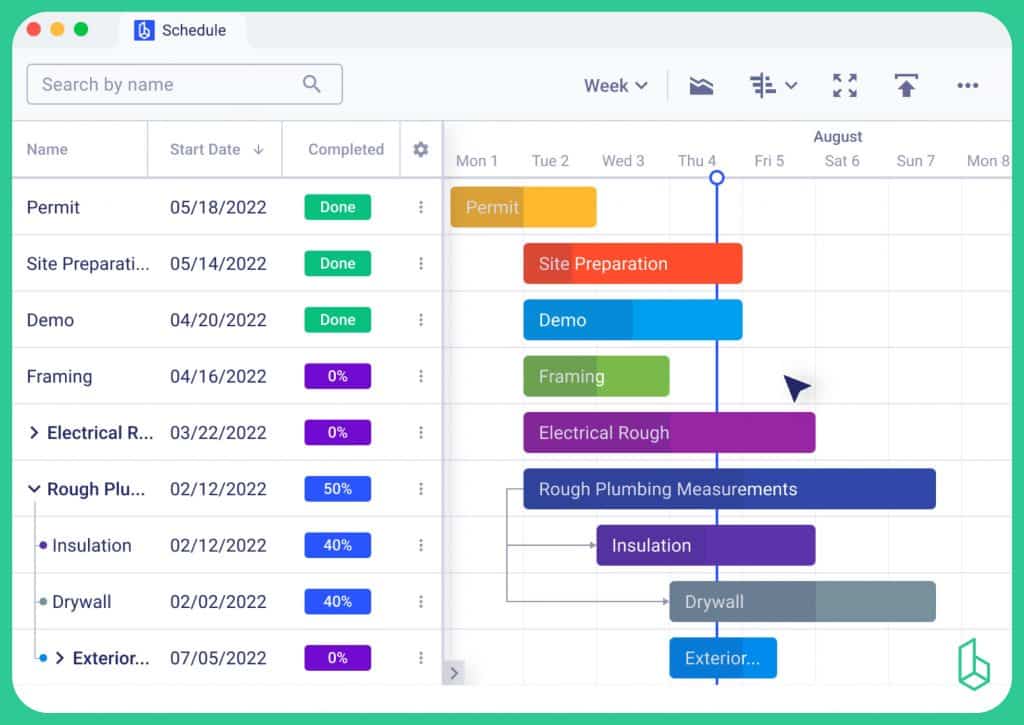
Interdependencies, the invisible threads that link tasks, are expertly handled in Buildern. The software allows you to establish logical connections between tasks, ensuring that the completion of one task triggers the initiation of another. This smart automation not only mimics real-world workflows but also safeguards against bottlenecks by maintaining a synchronized flow of activities.
Overall, it helps you keep track of your project and make everything more organized, eventually improving your construction risk management.
3. Create a Checklist of Risks
Of course, you never know what surprises life might bring to you, so you can’t tell the risks your company might face during the construction project. Before the COVID-19 pandemic, for instance, no one would imagine that the entire population might get locked in their homes for months—logically almost no construction companies had planned the solution beforehand.
However, there are certain risks that are not so rare and which you can easily anticipate. So try to create a checklist of all the risks your company might face during the project and develop possible solutions. Here are key risk types to include:
Safety
Unfortunately, the construction field is one of the least safe workplaces to be in. So taking care of construction safety should be your company’s utmost priority. To reduce the safety risks, create a daily safety inspection checklist or conduct weekly equipment and toolbox training.
Monetary
Even if you have planned every financial aspect before the start of the project, there are chances that you’ll still encounter some unexpected costs or waste of the existing material during the implementation stage.
Contract-related
We’ve already mentioned the importance of a well-written contract. If you don’t take your contract seriously, you might end up having disputes with your subcontractors just because of the wording of your contract. These types of issues are what we call contractual risks.
Environmental
Unfortunately, these are the kinds of risks you cannot predict. You never know for sure when there will be an earthquake, fire, or flood — the environmental hazards are mostly out of your control. But for efficient construction risk management, we still advise you to include them in your checklist. This way, you can pre-plan your actions if you encounter an environmental risk during your project. The best solution is to get appropriate insurance that will cover your loss in case of a natural disaster.
Project-related
Project risks usually occur because of poor project management, scheduling, budget planning, and similar administrative issues. That’s why you should create a proper construction project management strategy and equip yourself with all the tools needed to oversee the project as efficiently as possible.
Stakeholder-related
Stakeholder-related risks are the risks that occur because of the stakeholders. For example, they can arise because the project owner failed to communicate their vision entirely or changed their mind in the middle of the project. You might also face issues if you maintain poor communication with your stakeholders throughout the project and do not notify them about certain changes.

Overall, miscommunication is one of the biggest problems in the construction industry. Most projects fail to meet the deadlines because there was an issue of communication between the project owner, the PM, and the subcontractors. That’s why for the best construction risk management practices, it’s essential that you:
4. Optimize the Communication Flow Within the Team
People who work in the construction industry are usually famous for their strong work ethics and outstanding technical skills. But because of this, most of the time, the construction workers overlook the importance of soft skills. The reality is that clear communication is probably one of the most vital aspects of the work, especially if you want to mitigate the construction risks.
So, in the beginning, try to establish a strong communication chain. There might be hundreds of workers in large construction projects, and your project manager simply cannot communicate with each of them individually. That’s why you need to set a strong communication chain, defining who should report to whom. For instance, it might not be efficient if the site workers come to you whenever they face a technical issue. It’s certainly more beneficial for the project if they approach the project engineer instead.
Once the communication chain is set, make sure you have all the tools needed to maintain healthy communication on all levels. If everything is planned correctly, if your team is in a dangerous construction field situation or encounters a work accident, they will quickly solve the issue. This is because they will have everything required to communicate the case to the appropriate employee and promptly find a solution.
5. Always Have a Plan B
One of the most crucial aspects of construction risk management is always to have a Plan B. You should be ready for all kinds of situations that might come up during the project. That’s why we suggest always saving contacts of all the vendors and subcontractors you have worked with in case there is an immediate need for resources in the middle of the project.
And, of course, don’t forget about getting yourself proper insurance coverage. There are multiple insurance options to consider. Skim through them, and figure out which one is the best solution for your company.
6. Invest in Safety Training
One of the most common mistakes that construction companies make is assuming that training is required only for newly hired employees as part of their onboarding procedures. The opposite is true. To achieve the highest field safety possible, your company should constantly invest in safety training both for the new and the old employees.
Technologies and equipment always change in the construction industry, and even your most experienced field workers might not know how to use the new equipment. But even if your staff keeps working with the same technologies, they should all join the safety training every once in a while to refresh their knowledge. This will also help your workers avoid deviating from the already established procedures.
One of the best resources for construction safety training is the library of OSHA’s learning and training materials which you should refer to when designing your safety training program.
Providing construction site safety training will help you avoid major hazards in the working field and reduce the probability of severe injuries or even deaths. So training is not only a part of your construction risk management but is pretty much obligatory for ensuring the safety of your site workers.
7. Define Your Construction Risk Management Framework and Stick To It
Create a clear construction risk management framework and try to stick to it throughout the project. We know it can be hard to understand what should go into your framework, so we have some tips to help you out. Here’s how to plan and outline your workflow:
- Identify the potential risks
First, specify the risks that can occur during the project. Here’s where your risk checklist will be of use. But even with it, make sure you carefully review all of the documents, specifications, and plans. Fully understanding the project’s scope is mandatory to avoid risks from your side. If you’ve already worked on similar projects, rely on that experience to identify the issues that can come up during the work.

- Prioritize the risks
Once you have identified the most probable risks, start prioritizing them. For that, figure out the impact of each risk on your list and also consider its probability. This way, you can divide your list into high impact/low impact and high probability/low probability sections. The risks that have both high impact and high probability should definitely be taken care of first.
- Manage the risks
This is the final step of your workflow. After identifying and prioritizing your risks, you should start planning the solutions beforehand. The first thing to do is to decide if you can reduce, eliminate, avoid, or accept each risk. Then, plan how you will resolve the risk accordingly.
8. Keep Optimizing the Procedures and Management Strategies
Finally, remember that the construction risk management process never stops. Even if you have taken months to pre-plan and create your risk management strategy, you still need to be open to changes throughout the project. Even minor success can be a reason to optimize and improve the existing framework.
Same works for the opposite case. If you find out that one of your strategies isn’t working and you confront problems way too often, it definitely means that you need to review the strategy. Don’t be afraid to change some aspects of your workflow, even when you’re halfway through the project.
Conclusion
Equipped with all these tips, you have everything you need to create an adequate construction risk management flow and avoid running out of budget or time.
Don’t forget to check out other helpful resources on everything construction-related from Buildern. We’ll help you mitigate the risks even more with our articles on construction safety, management, rework, and so much more!

![Detailed Construction Project Cost Breakdown [Examples Included]](https://buildern.com/resources/wp-content/uploads/2024/09/BLOG_Cover_Construction-project-cost-breakdown-2-copy-150x150.webp)


![Detailed Construction Project Cost Breakdown [Examples Included]](https://buildern.com/resources/wp-content/uploads/2024/09/BLOG_Cover_Construction-project-cost-breakdown-2-copy-768x501.webp)
